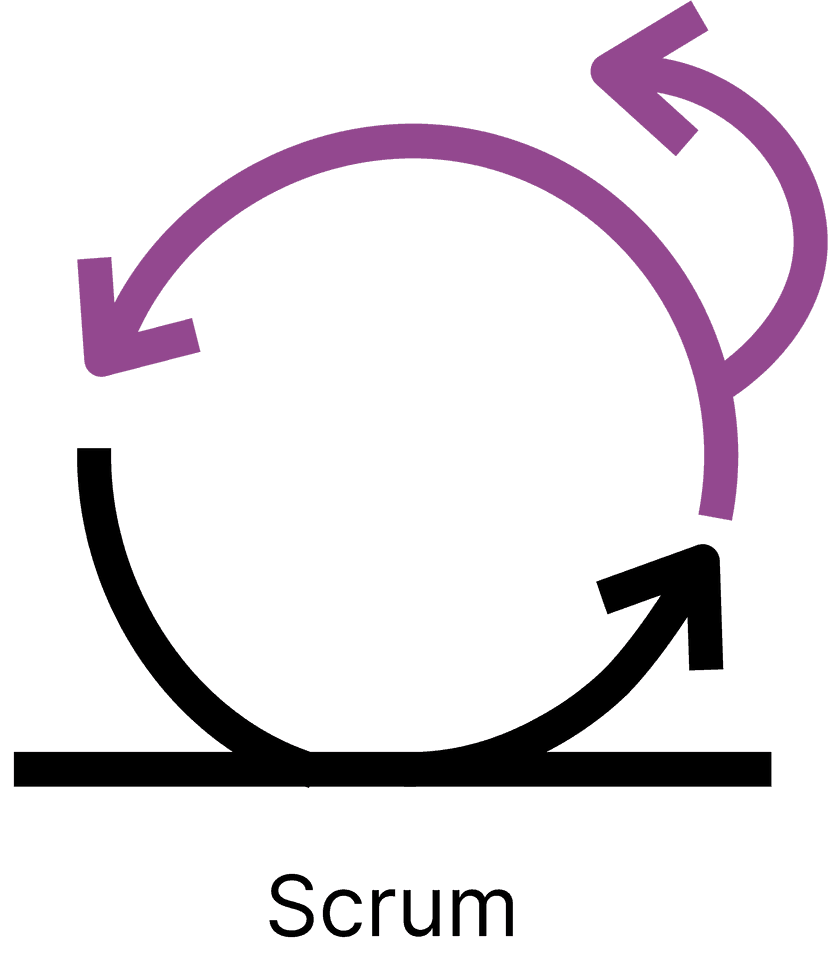Scrum

What is scrum?
Definition
Scrum is an agile project management framework that helps teams deliver high-quality products in a timely manner by breaking down large projects into smaller, manageable tasks called sprints.
Analogy
Imagine you're building a Lego castle. Instead of trying to assemble the entire castle at once, you break the process down into smaller tasks, such as building the towers, walls, and gates. You complete each task one at a time, and after finishing each part, you review your work to make sure it's up to standard before moving on to the next task. This is similar to how Scrum works, breaking down complex projects into smaller sprints to ensure quality and efficiency.
In other words
Scrum is like building a Lego castle in smaller, manageable pieces to ensure a high-quality final product.
Why is scrum important?
It's one thing to know what Scrum is, but that is worthless if you don't know why you should know what a code repository is in the first place. Let's break down the importance of this tech term based on two high-level categories. We'll walk through an explanation as well as provide a score, 1-10, that shows you how much you should care about Scrum.
Pre-Product: 8/10
If you don't have a product yet, Scrum is essential for organizing and managing your project efficiently. It helps you prioritize tasks, allocate resources, and ensure that your team is on track to meet deadlines. By using Scrum, you can minimize risks and maximize the chances of delivering a successful product.
Live Product: 8/10
If you have a live product, Scrum remains important as it allows you to continuously improve your product through regular iterations. It enables you to adapt to changing customer needs, market conditions, and emerging technologies. Scrum helps you maintain a high level of quality and ensures that your product remains competitive in the market.
Examples of scrum
So you know what Scrum is, by definition. You know if you should care about it or not depending on your situation as a business/company/product. To dig in deeper, we will walk through some tools and processes so we can make sure you really have a solid grasp on Scrum.
Scrum Roles
In Scrum, there are three key roles: the Product Owner, the Scrum Master, and the Development Team. The Product Owner is responsible for defining the product vision and prioritizing tasks. The Scrum Master ensures that the team follows Scrum practices and helps remove any obstacles. The Development Team works on the tasks and delivers the product incrementally.
Scrum Artifacts
Scrum uses several artifacts to track progress and manage work, such as the Product Backlog, Sprint Backlog, and Increment. The Product Backlog is a prioritized list of all the features and tasks needed for the project. The Sprint Backlog contains the tasks selected for the current sprint. The Increment is the completed work from the sprint, which is added to the overall product.
Scrum Events
Scrum consists of several events to ensure effective communication and collaboration among team members. These events include Sprint Planning, Daily Scrum, Sprint Review, and Sprint Retrospective. Each event serves a specific purpose and helps the team stay aligned and focused on delivering a high-quality product.
Key Takeaways:
- Scrum is an agile project management framework that breaks down complex projects into smaller, manageable sprints.
- If you do not yet have a product, Scrum is essential for organizing and managing your project efficiently.
- If you do have a product, Scrum enables continuous improvement and adaptation to changing customer needs and market conditions.
- Scrum involves specific roles, artifacts, and events to ensure effective communication, collaboration, and progress tracking.

